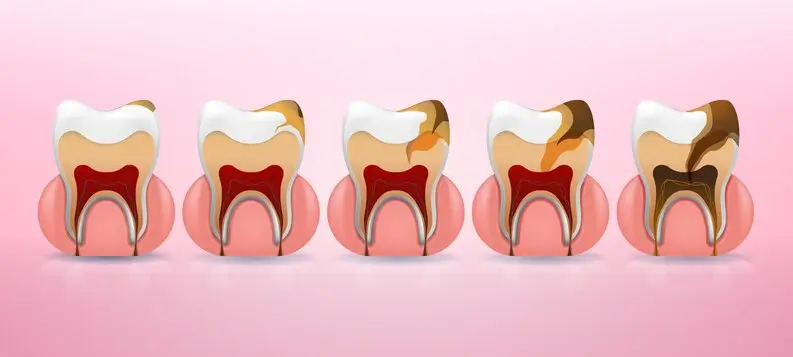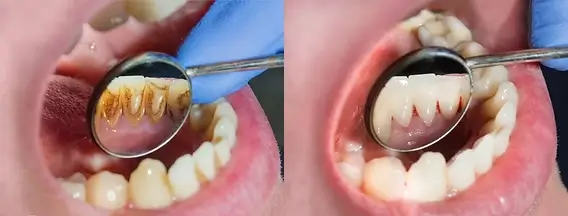Maintaining a healthy smile is about more than just brushing and flossing—it’s about understanding the risks that could threaten your oral health daily. Common dental diseases affect people of all ages, and they often develop quietly, without obvious warning signs. From gum infections to tooth decay, these conditions can lead to long-term complications if ignored.
This article explores the most common dental diseases, how to recognize the symptoms of gum disease, and practical strategies for preventing tooth decay before it starts. The more you know, the more control you have over your dental health and your future smile.
What Are the Most Common Dental Diseases?
When we talk about common dental diseases, we’re usually referring to a few key conditions that impact oral health on a global scale. These include tooth decay, gum disease, enamel erosion, and oral infections. Each of these issues has its own causes, symptoms, and long-term consequences.
Tooth decay—often called cavities—is one of the most widespread dental problems worldwide. It happens when plaque builds up on teeth, producing acids that wear down the enamel. Without treatment, decay can progress to deeper layers of the tooth, causing pain and even leading to tooth loss.
Gum disease is another major concern. It begins with gingivitis, a mild inflammation of the gums, and can advance into periodontitis—a serious infection that damages the bone supporting your teeth. Left untreated, it can cause irreversible harm and is one of the leading causes of adult tooth loss.
Other conditions like dental abscesses, cracked teeth, and oral thrush may be less common but still fall under the umbrella of common dental diseases, especially for patients with weakened immune systems, dry mouth, or poor oral hygiene read more.

Understanding the Symptoms of Gum Disease
One of the most overlooked dental issues is gum disease. While many people associate oral health with their teeth, the condition of your gums plays a critical role in keeping your smile intact. Recognizing the symptoms of gum disease early can help prevent more serious complications down the road.
In its early stages, gum disease presents as gingivitis. You might notice redness, swelling, or bleeding when brushing your teeth. Your gums may feel tender or appear slightly receded from the teeth. At this stage, gum disease is completely reversible with proper hygiene and professional cleaning.
As it progresses to periodontitis, symptoms become more severe. You may experience persistent bad breath, visible pus between the teeth and gums, loose teeth, and even shifting in tooth alignment. The infection spreads deeper into the bone, weakening the structures that hold your teeth in place.
Ignoring the symptoms of gum disease allows it to advance, which can ultimately result in tooth loss and a need for complex periodontal treatment. That’s why early detection and regular dental checkups are vital.
The Dangers of Tooth Decay and How It Starts
Tooth decay is often thought of as a childhood problem, but it affects adults just as frequently. It starts when bacteria in the mouth feed on sugars from food and drinks, producing acid that eats away at tooth enamel.
If left unchecked, decay continues through the enamel into the dentin and even into the pulp, where nerves and blood vessels are located. This process can lead to toothaches, infections, and eventual loss of the tooth.
The biggest risk with decay is that it often starts silently. Many people don’t realize they have a cavity until they feel pain or sensitivity. That’s why regular dental exams are essential—they allow your dentist to spot early signs before decay becomes serious.
Practicing good oral hygiene and preventing tooth decay isn’t just about brushing twice a day. It involves limiting sugary foods, using fluoride toothpaste, and staying consistent with professional cleanings.
Preventing Tooth Decay: Habits That Save Smiles
Preventing tooth decay is easier than treating it. Prevention starts with awareness—knowing how your diet, habits, and daily routine affect your oral health. The combination of bacteria, food particles, and neglect can quickly create a dangerous environment for your teeth.
Start by brushing thoroughly twice a day, preferably after meals. Flossing daily removes food particles and plaque that hide between the teeth. Use a mouthwash with antibacterial properties to reduce the bacterial load in your mouth.
Staying hydrated helps as well—saliva plays a crucial role in washing away food and neutralizing acid. Drinking plenty of water, especially after meals or snacks, helps maintain a healthy pH balance in your mouth.
Diet is also a major player in preventing tooth decay. Sticky, sugary snacks feed bacteria and prolong acid exposure. Opting for crunchy vegetables, dairy, and fiber-rich foods can actually support a healthier oral environment.
Regular dental visits complete the prevention cycle. A professional cleaning removes hardened plaque (tartar) and lets your dentist check for any early signs of cavities or gum issues that you might not notice on your own.

The Link Between Oral Health and Overall Well-being
Oral health is not an isolated concern—it’s strongly connected to your overall physical health. Common dental diseases like gum infections have been linked to systemic issues such as heart disease, diabetes, and respiratory problems. That’s because inflammation in the gums can affect other parts of the body through the bloodstream.
Pregnant women with gum disease may face complications like premature birth or low birth weight. Diabetic patients with poor oral hygiene often struggle with blood sugar control due to chronic inflammation.
Even your mental health is impacted by dental problems. People with severe decay or tooth loss often avoid social situations, suffer from reduced confidence, and may experience anxiety related to their appearance or speech.
Understanding these connections makes oral care more than just cosmetic—it’s a foundation for long-term wellness. Treating symptoms of gum disease or reversing decay is not just about saving your smile, but also about protecting your entire body.
Final Thoughts: Protect Your Smile for Life
The good news is that most common dental diseases are entirely preventable. With the right knowledge, daily habits, and professional support, you can avoid the pain, cost, and health risks associated with oral conditions.
Don’t wait for discomfort or visible damage to take action. Be proactive. Learn to spot the early symptoms of gum disease, commit to preventing tooth decay, and treat your dental health as a non-negotiable part of your lifestyle.
A healthy mouth means more than just white teeth—it means freedom to smile, speak, and live confidently every day. Your future self will thank you for it read more.

